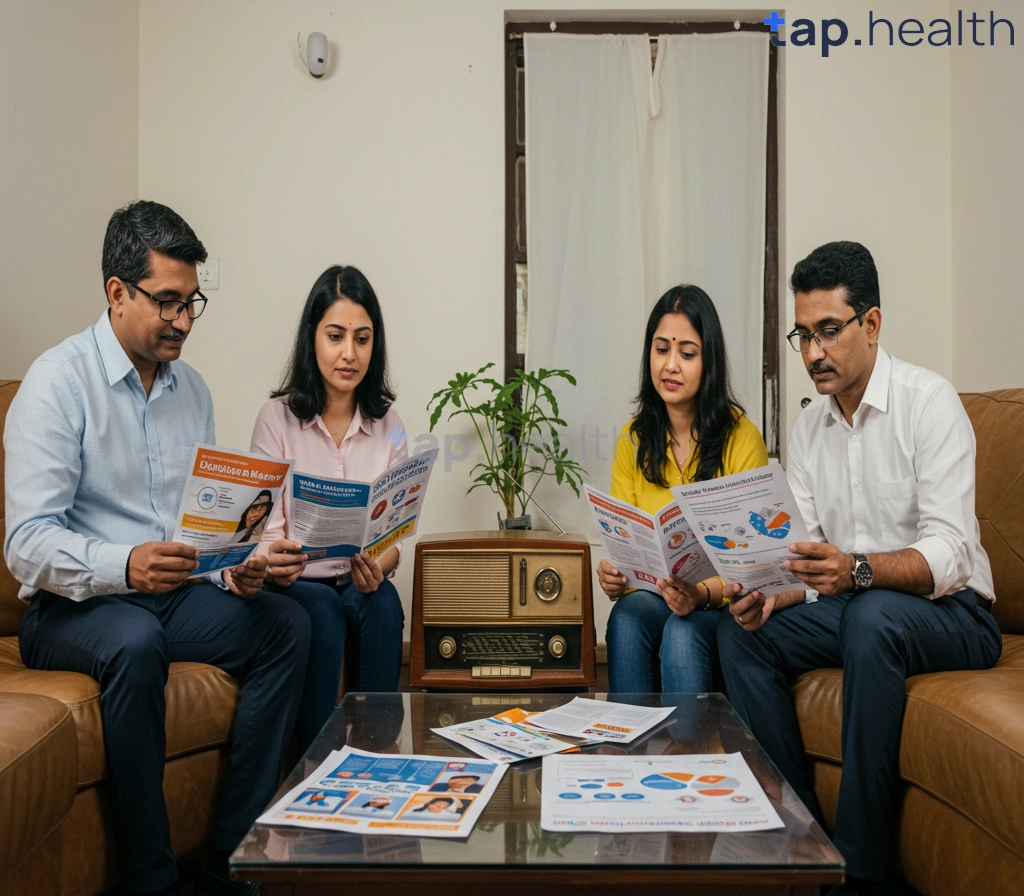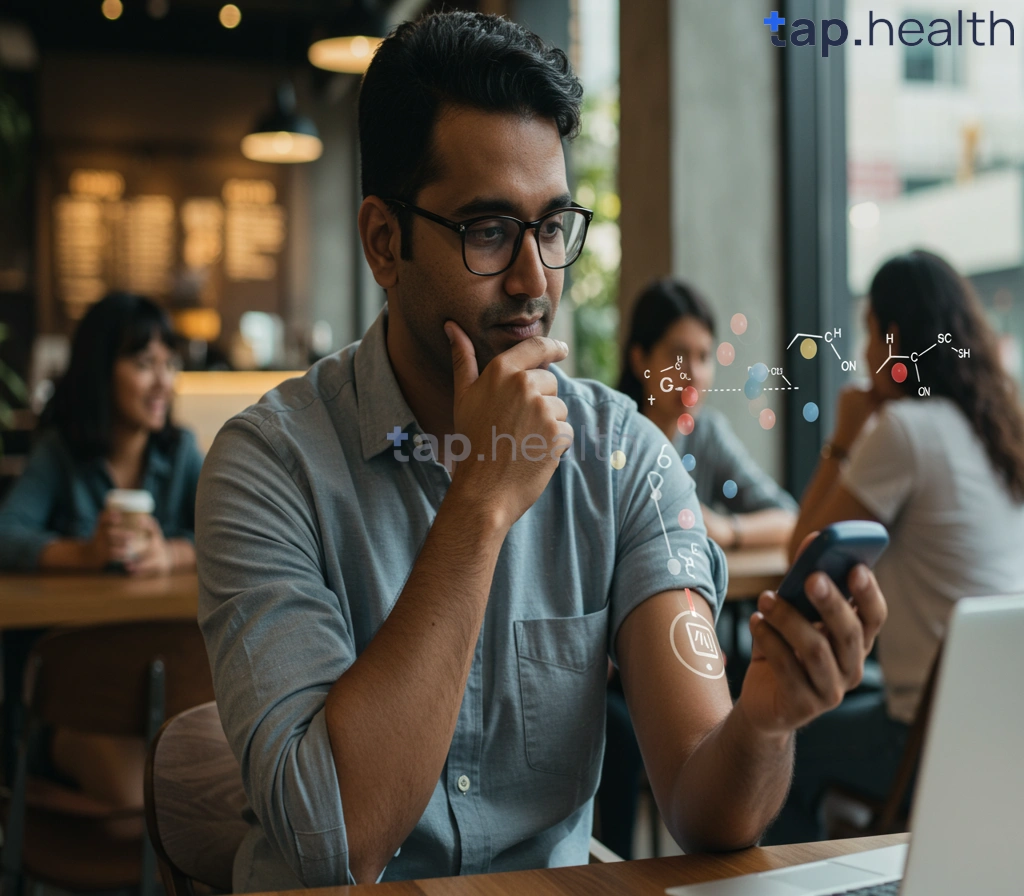Table of Contents
- Radio Broadcasts: Improving Diabetes Management
- Epilepsy Awareness: The Power of Radio Public Health Campaigns
- Pharmacogenomics & Smoking Cessation: Radio’s Role
- Public Health Announcements: Radio’s Reach for Health
- Harnessing Radio for Effective Health Communication
- Frequently Asked Questions
- References
Are you ready to explore the surprising power of radio waves in improving public health outcomes? This blog delves into the fascinating intersection of technology and healthcare, specifically focusing on Harnessing Radio for Public Health: Diabetes, Epilepsy, and the Pharmacogenomics of Smoking. We’ll uncover how radio technology, in various forms, is being used to address these critical health challenges, from remote patient monitoring to targeted public health campaigns. Get ready to learn how innovative applications of radio are transforming the way we diagnose, treat, and prevent these prevalent conditions. Let’s dive into the possibilities!
Radio Broadcasts: Improving Diabetes Management
Reaching a Wider Audience
Diabetes disproportionately affects the working-age population in India and tropical countries. According to the International Diabetes Federation, 61% of people with diabetes are aged between 20-64 years; 39% are aged 65+. This highlights the crucial need for accessible and effective health communication strategies. Radio, with its widespread reach, especially in underserved communities, presents a powerful tool for improving diabetes management.
Targeted Radio Programming for Better Outcomes
Effective radio broadcasts should incorporate simple, engaging language tailored to the diverse literacy levels within the target audience. Focus on practical advice – managing blood sugar levels, healthy eating habits specific to regional diets, and the importance of regular exercise. Success stories from individuals managing their diabetes can be incredibly inspiring, making the information more relatable. Consider including segments with doctors or diabetes educators answering listener questions, thus fostering a sense of community support and promoting active participation. These interactive elements will greatly enhance engagement. For more in-depth information on the impact of education, see our article on How Diabetes Education Enhances Health Outcomes – Tap Health.
Actionable Steps for Regional Impact
Partnering with local radio stations is key to ensuring the broadcasts resonate with the specific cultural contexts and linguistic nuances of different Indian and tropical communities. Incorporating traditional folk music or storytelling into the programming can increase memorability and accessibility. Regular, consistent broadcasts are more effective than one-off campaigns. Remember that clear, concise messaging regarding diabetes prevention and management, tailored to diverse regional contexts, is vital. By leveraging the power of radio, we can empower individuals to take control of their health and improve diabetes management outcomes in these critical regions. For practical tips on managing diabetes effectively, check out our blog on 10 Proven Tips for Effective Diabetes Management.
Epilepsy Awareness: The Power of Radio Public Health Campaigns
Reaching Underserved Communities Through Radio
Radio remains a powerful tool for public health communication, especially in India and other tropical countries with diverse populations and varying levels of literacy. Its accessibility, low cost, and ability to reach remote areas make it ideal for disseminating vital information about epilepsy. Effective radio campaigns can significantly improve awareness, reduce stigma, and promote early diagnosis and treatment. This is particularly crucial given the potential impact of untreated epilepsy on individuals and families.
Crafting Compelling Radio Spots
Successful campaigns require carefully crafted messages. Simple, memorable language, delivered in local dialects, is key. Radio spots should include clear explanations of epilepsy symptoms, dispel common myths, and emphasize the importance of seeking medical help. Including testimonials from individuals living with epilepsy can add emotional depth and humanize the condition. Consider using jingles and music to enhance recall and engagement.
Leveraging Community Radio
Community radio stations play a vital role in reaching geographically dispersed and underserved communities. Partnering with these stations ensures culturally relevant messaging and broader reach. Public service announcements (PSAs) can be tailored to specific demographics, addressing unique challenges and cultural sensitivities. These campaigns should encourage listeners to seek help from local health facilities and highlight available support groups. By collaborating with local healthcare providers and community leaders, public health organizations can amplify their impact and build trust within communities. Understanding the impact of neurological conditions is crucial; for more information on other conditions, you might find our article on What is Psychosis: Symptoms, Causes and its Types helpful. Effective public health campaigns, like those addressing epilepsy, can also be compared to campaigns tackling other health issues, such as the connection between diabetes and sleep apnea.
Pharmacogenomics & Smoking Cessation: Radio’s Role
Reaching Underserved Populations Through the Airwaves
In Indian and tropical countries, where access to healthcare can be limited, radio remains a powerful tool for disseminating vital public health information. This is especially crucial when addressing complex issues like smoking cessation, particularly amongst individuals with diabetes. Research shows smokers with diabetes face double the mortality rate from cardiovascular issues, highlighting the urgent need for effective interventions. Radio offers a unique opportunity to bridge this healthcare gap.
Leveraging Pharmacogenomics for Personalized Messaging
Pharmacogenomics, the study of how genes affect a person’s response to drugs, is increasingly relevant to smoking cessation. Different individuals respond differently to various nicotine replacement therapies (NRTs) or other cessation medications. Radio can be used to educate listeners about pharmacogenomic testing and its potential to personalize treatment plans, increasing the likelihood of successful quit attempts. Public service announcements (PSAs) can explain the benefits of genetic testing and connect listeners with resources for assessment and treatment.
Targeted Campaigns for Specific Communities
Effective radio campaigns require tailored messaging. For instance, PSAs in local languages, featuring testimonials from community members who have successfully quit smoking with the aid of pharmacogenomics-guided treatment, can significantly impact engagement. Collaborations with local healthcare providers and community leaders can further strengthen the campaign’s reach and credibility. Radio’s accessibility makes it ideal for targeting remote and underserved populations across diverse geographical regions, ensuring information reaches those most at risk. This is especially important given the link between smoking and respiratory complications, as detailed in How Does Diabetes Affect the Respiratory System?. The impact of lifestyle choices, including diet, is also crucial in preventing and managing many health issues that are worsened by smoking. For instance, see The Role of Diet in Preventing and Managing Stroke – Tap Health for more information on the role of diet in overall health.
Call to Action: Partnering for Progress
Indian and tropical countries need innovative, cost-effective strategies to combat the devastating effects of smoking, especially amongst individuals with diabetes. We urge healthcare organizations, policymakers, and radio broadcasters to collaborate on developing and broadcasting impactful campaigns that leverage the power of pharmacogenomics and the reach of radio to save lives. Let’s harness the airwaves to empower individuals towards healthier futures.
Public Health Announcements: Radio’s Reach for Health
Radio remains a powerful tool for disseminating vital public health information, particularly in diverse Indian and tropical countries where access to digital media might be limited. The high prevalence of diabetes in urban areas, reaching 12.1% compared to 8.3% in rural areas according to the International Diabetes Federation’s Diabetes Atlas, highlights the urgent need for effective communication strategies. Radio’s widespread accessibility makes it uniquely positioned to bridge this health information gap.
Targeting Diabetes, Epilepsy, and Smoking through Radio
Effective public health campaigns can leverage radio’s reach to address crucial health issues like diabetes management, epilepsy awareness, and the pharmacogenomics of smoking cessation. For example, short, easily digestible radio spots in local languages can educate listeners about diabetes prevention through diet and exercise, highlighting the disproportionately high prevalence in urban Indian settings. Similarly, radio can be instrumental in dispelling myths and providing accurate information about epilepsy, reducing stigma and encouraging timely treatment. Furthermore, targeted messaging can emphasize the importance of considering individual genetic predispositions (pharmacogenomics) when designing smoking cessation programs, potentially enhancing their efficacy. Understanding the different modes of disease transmission is crucial for effective public health interventions, especially when considering widespread issues like these.
Actionable Steps for Regional Impact
Radio campaigns should incorporate: simple, clear messaging tailored to specific regional dialects; relatable case studies and testimonials featuring local community members; partnerships with trusted local health professionals for credibility; and clear calls to action such as visiting local health clinics or accessing online resources for more information. By thoughtfully leveraging radio’s extensive reach, we can make a tangible difference in improving health outcomes across diverse populations in Indian and tropical countries. Regularly broadcasting practical tips and accessible information will create lasting impact. For more health news and information, check out our comprehensive Health Blog, Medical News & Medical Conditions Blog.
Harnessing Radio for Effective Health Communication
Radio remains a powerful tool for health communication, especially in Indian and tropical countries with diverse populations and varying levels of literacy. Its accessibility, affordability, and ability to reach remote areas make it invaluable for disseminating crucial public health information. Consider the significant impact of diabetic neuropathy, affecting 30-50% of diabetic patients in these regions, causing debilitating pain and reduced mobility. Radio broadcasts can effectively educate individuals about early detection, management, and available support systems.
Addressing Specific Health Challenges
The reach of radio can be leveraged to address specific health concerns like diabetes management and epilepsy awareness. Simple, easily understood messages can inform listeners about healthy lifestyle choices, medication adherence, and the importance of regular check-ups. Similarly, dispelling myths and misconceptions surrounding epilepsy, a condition prevalent in many tropical climates, is crucial. Radio programs can provide accurate information about diagnosis, treatment options, and ways to support individuals living with epilepsy. This is particularly impactful in regions with limited access to healthcare professionals. While radio offers broad reach, advancements in Telehealth Services can complement these efforts, especially in providing personalized follow-up care.
The Role of Pharmacogenomics in Smoking Cessation
Furthermore, the power of radio can extend to promoting evidence-based interventions. Discussions on the pharmacogenomics of smoking cessation can empower listeners to make informed decisions about nicotine replacement therapy and other interventions, tailoring approaches to individual genetic predispositions. This targeted approach, communicated effectively through radio, could significantly boost smoking cessation rates across diverse populations. Accurate diagnosis is crucial for effective treatment, and technologies like ultrasound play a vital role in many health conditions.
Actionable Steps for Effective Radio Campaigns
Developing culturally sensitive messages in local languages is crucial for effective communication. Radio programs should feature relatable stories and credible experts to build trust and promote engagement. Collaborating with local community leaders and healthcare providers helps ensure widespread reach and adoption of the information presented. Finally, integrating call-in segments and interactive elements enhances audience participation and facilitates a two-way dialogue. By actively harnessing the power of radio, we can make significant strides in improving public health outcomes across India and the tropical regions.
Frequently Asked Questions on Harnessing Radio for Public Health
Q1. What is the primary benefit of using radio broadcasts to improve health outcomes in India and tropical countries?
Radio’s extensive reach, especially in underserved communities, makes it a powerful tool for disseminating vital health information and improving management of conditions like diabetes and epilepsy, and promoting smoking cessation. It’s cost-effective and accessible even to those with limited literacy.
Q2. How can radio broadcasts be designed to effectively reach diverse audiences and improve engagement?
Effective broadcasts use simple, engaging language in local dialects, incorporate relatable success stories and testimonials, include interactive segments with health experts answering listener questions, and leverage traditional storytelling methods or music to enhance memorability.
Q3. What are some key challenges or limitations of using radio for health communication, and how can they be addressed?
Challenges include reaching geographically dispersed populations and ensuring culturally sensitive messaging. Partnerships with local radio stations, community leaders, and healthcare providers are crucial to overcome these challenges and tailor the content to the specific needs and context of the target communities.
Q4. What actionable steps can be taken to create impactful radio campaigns for specific health issues such as diabetes, epilepsy, and smoking cessation?:
Actionable steps include partnering with local radio stations, incorporating traditional elements into programming, using consistent and regular broadcasts, and creating clear, concise messaging tailored to diverse regional contexts. For specific health issues, focus on practical advice, dispelling myths, and providing clear calls to action.
Q5. How can pharmacogenomics be incorporated into radio campaigns to improve smoking cessation outcomes?:
Radio can educate listeners about pharmacogenomics and its role in personalizing smoking cessation treatment plans. Public service announcements (PSAs) can explain the benefits of genetic testing and connect listeners with resources for assessment and treatment. Featuring testimonials of successful quitters using this approach can greatly improve engagement.
References
- A Voice-based Triage for Type 2 Diabetes using a Conversational Virtual Assistant in the Home Environment: https://arxiv.org/pdf/2411.19204
- Electronic Health Records-Based Data-Driven Diabetes Knowledge Unveiling and Risk Prognosis : https://arxiv.org/pdf/2412.03961





